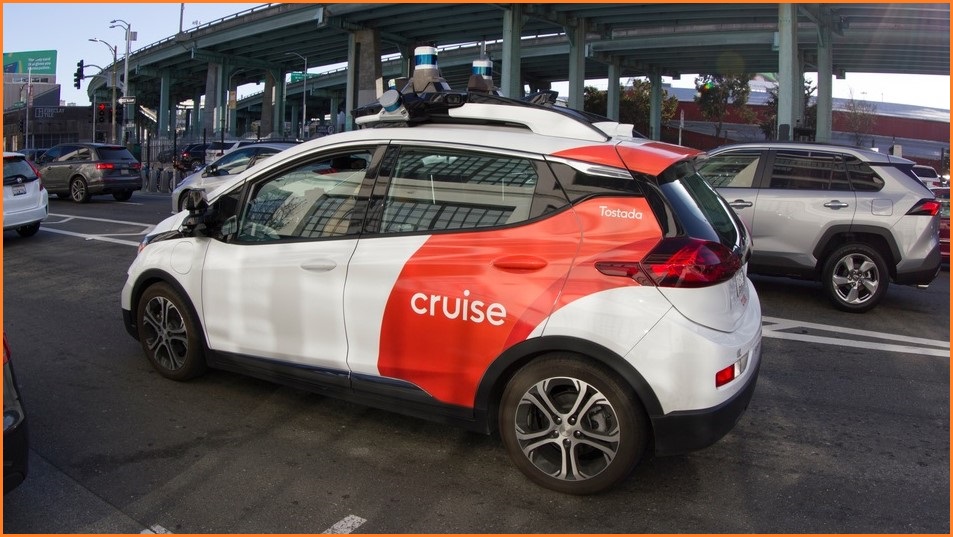An historic vote by California regulators has allowed two self-driving taxi operators to sell unrestricted ‘robotaxi’ rides 24x7 – but within one day, online reports of widespread traffic chaos and near-misses with pedestrians had many questioning the wisdom of the move.
Delivered amidst a long and frenzied debate about their safety, the decision by the California Public Utilities Commission (CPUC) to allow commercial passenger services by driverless taxi firms Cruise LLC and Waymo LLC – self-driving firms owned by General Motors and Google parent Alphabet, respectively – was a major step forward for autonomous vehicles.
The companies had previously been operating on time-restricted permits that only allowed them to carry passengers in certain areas of San Francisco, Los Angeles, and Mountain View at certain times, with human ‘safety drivers’ required in many circumstances.
With those restrictions now removed, the two companies – which already hold the Autonomous Vehicle (AV) Deployment Program Permits required by state motor vehicle authorities – were given the green light for their nearly 500 robotaxis to begin ferrying passengers around San Francisco.
Waymo AVs can now take paying passengers on local roads and highways at speeds of up to 65 mph (105kph), day or night, regardless of weather conditions.
Cruise, having provided a Passenger Safety Plan that the CPUC found “is complete and reasonably protects passenger safety”, can now provide driverless services at up to 35 mph (56 kph), focusing it on city streets.
“While we do not yet have the data to judge AVs against the standard human drivers are setting, I do believe in the potential of this technology to increase safety on the roadway,” CPUS commissioner John Reynolds said as the decision was announced.
“Collaboration between key stakeholders in the industry and the first responder community will be vital in resolving issues as they arise in this innovative, emerging technology space.”
It didn’t take long for Reynolds’ confidence to be tested: within days of the CPUC decision, social-media sites were flooded with reports of the companies’ robotaxis blocking roads and nearly colliding with pedestrians.
Up to 10 Cruise cars converged on a main road near the Outside Lands music festival in San Francisco’s North Beach, with the cars creating havoc as they failed to navigate tight spots and created a kilometres-long queue of angry drivers.
Another video showed a Cruise AV stopped in a city street, where it stayed for many minutes as cars – including a clearly smarter Waymo car – weaved around it.
Cruise blamed congestion on area mobile networks – which its cars rely on to navigate – but the debacles fuelled angry ‘I-told-you-so’s from critics of the AVs, who worry that unrestricted use of AVs will, among other things, endanger the public and obstruct emergency vehicles.
Autonomous vehicles have been reported blocking firehouse driveways, driving through emergency tape, blocking fire trucks, and obstructing emergency workers – with the San Francisco Fire Department recording 55 such episodes in the past six months alone.
San Francisco mayor London Breed admitted that “there remain challenges we need to work to resolve” while promising to “continue to work with the regulators and the industry leaders to improve this emerging technology while prioritising the safety and function of our streets.”
Australian robotaxis still in park
The early results in San Francisco are likely to have a chilling effect on robotaxi services in Australia, which has taken a far more conservative approach as experts test the technology and operators warn it will be hard to make the services commercially viable.
Building on scattered early trials – including a 2017 robotaxi trial in Perth – in late 2021 the NSW Government partnered with Hyundai-backed autonomous vehicle firm Motional to trial the use of autonomous IONIQ 5 robotaxis as that company expands its operations from early rollouts in Singapore and several US cities.
Transport for NSW (TfNSW) has been testing autonomous vehicle technologies at its Cudal, NSW Future Mobility Testing Centre, while last month saw commencement of tests of the fully-autonomous ZOE.2 car on Mount Isa roads.
Yet widespread availability remains years away, with state road authorities still evaluating the technology and updating strategies such as TfNSW’s Connected and Automated Vehicle (CAV) Readiness Strategy to, as the agency puts it, “prepare for the safe and effective deployment of CAVs on NSW roads.”










